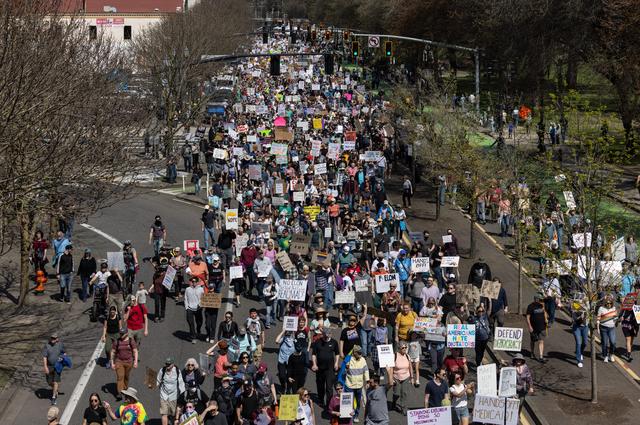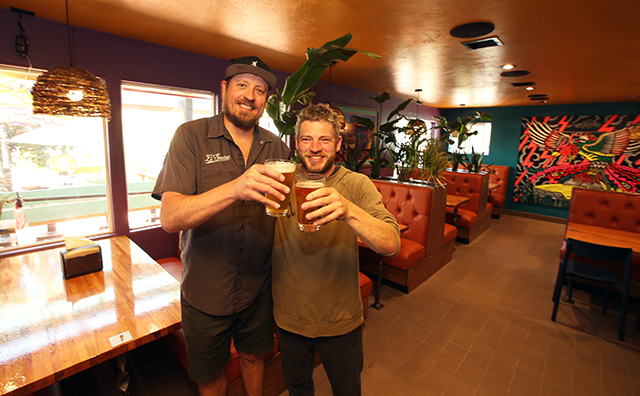Guest Column: Oregon must address mega-dairies
Published 9:15 pm Monday, July 20, 2020

- Guest Column
On March 10, Gov. Kate Brown issued Executive Order 20-04, directing state agencies to do everything within their authority to reduce Oregon’s greenhouse gas emissions to 45% below 1990 levels by 2035. Rapidly reducing Oregon’s greenhouse gas emissions is critical if Oregon is to do its part to prevent the worst effects of climate change, and executive action was the only option following a second year of legislative walkouts that obstructed any meaningful action to address the climate crisis. But the executive order isn’t enough. Under the executive order, the Department of Environmental Quality is required to propose plans to do everything it can to reduce climate emissions. Unfortunately, DEQ’s proposal, submitted on May 19, falls far short.
Continuing decades of inaction, DEQ’s plans for ambitious rule-making and policy changes omit any mention of the significant — and growing — climate change contributions coming from the state’s industrial mega-dairies. Mega-dairies, which intensively confine thousands of cattle and the enormous amounts of waste they produce, are an important contributor to climate change, in Oregon and nationally. Air emissions from mega-dairies include many volatile and toxic air pollutants, including the greenhouse gases methane, carbon dioxide and nitrous oxide. Between 1990 and 2017, U.S. methane emissions from dairy cattle manure rose by 134 %. This is largely because factory farms have increasingly replaced family farms, and mega-dairies, unlike sustainable family farms, rely on storing liquid waste from animals permanently housed indoors in the anaerobic conditions that lead to methane production. More factory farms: more climate change pollution.
Even more devastating, climate pollution doesn’t affect all Oregonian’s equally. Black, brown and Indigenous Oregonians disproportionately bear the burden of the environmental, public health and economic harms brought on by mega-dairies. In 2017, Oregon’s nearly 100,000 dairy cows living on factory farms produced 647 million gallons of manure — enough to fill 2.7 Olympic swimming pools each day, which is far more waste than is produced by the entire city of Bend. DEQ and stakeholders have understood for over a decade that Oregon must address the mega-dairy industry’s air emissions. In 2008, the state’s Dairy Air Quality Task Force, which included industry groups as well as environmental and family farm advocates, recommended by consensus that the state begin a process to regulate greenhouse gases and other air pollution from the industry. The recommendations have sat on the shelf at DEQ, and even Gov. Brown’s executive order could not compel the agency to dust them off.
Due to the governor’s and DEQ’s failure to address mega-dairy greenhouse gas emissions, Oregon is now facing the threat of further dramatic increases in this pollution centered in Oregon’s rural communities. Gov. Brown’s administration is poised to permit a new mega-dairy, Washington-based Easterday Farms, to operate on the same site as the failed Lost Valley Farm in Morrow County, currently struggling with groundwater contamination from nearby industrial agriculture. Easterday Farms proposes to house almost 30,000 cattle. Under the current — and proposed — regulations, Easterday’s massive methane emissions will be unregulated and will not factor into the state’s plan to control its overall climate change contributions.
Oregon is in the midst of a mega-dairy crisis. Out-of-state companies are moving into Oregon to set up mega-dairies that will harm our rural communities, put small dairy farmers out of business, pollute our air and water and put our climate at risk. Yet Oregon is rolling out the red carpet for factory farms by failing to treat them like the industrial polluters they are. Easterday Farms is not the first enormous mega-dairy proposed in Oregon — it would be just down the road from Threemile Canyon Farms, one of the nation’s largest with nearly 70,000 cows — and it certainly will not be the last. Gov. Brown has a choice to make. Will she be a true climate leader, or will she continue to allow new mega-dairies to move into our state?
Do you have a point you’d like to make or an issue you feel strongly about? Submit a letter to the editor or a guest column.






